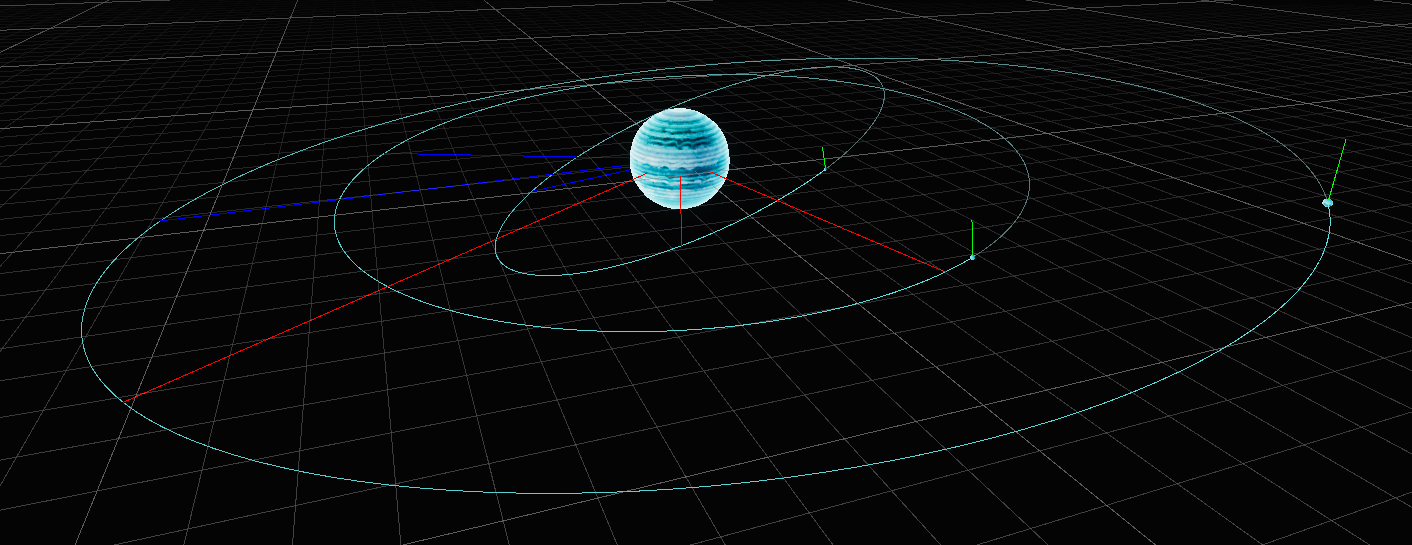Orbital, Part 1
Down to it’s core, the mechanics and visuals of LithoBreak are anchored in scientific simulations. One example that can be seen just outside the large station window is the integrated orbital mechanics.
Fish-eye perspective of 3 moons orbiting a gas giant.
Orbital Equations
WARNING: Math ahead. Engineers just can’t help themselves…
We will dive into a brief overview of orbital mechanics before getting into how it is integrated into the gameplay. This will only cover one type of orbit here, the elliptical orbit, but LithoBreak handles all the orbits similarly. The simplified elliptical orbit equation can be derived based upon Newton’s and Kepler’s laws. We’ll condense many of the steps here to keep this as short as possible.
We start with the equation that relates radius with orbital phase:
Where p is the periapsis, e is the eccentricity and θ is the true anomaly.
This gives us a radial position at any true anomaly, but doesn’t provide something that can be directly advanced with time. After much math and patience, we arrived on a relatively simple equation to advance the true anomaly (dθ) given a change in time (dt):
Now that the position along an ellipse can be calculated with respect to time, the ellipse is then oriented into a specific orbital plane by defining the Longitude of Ascending Node (red lines), Argument of Perihelion (blue lines), and an Inclination of the Ecliptic. Every orbital body also has an Axial Tilt (green line) and Rotation Rate, which are used to set and update orientations.
A highly eccentric orbit
A perturbed orbit
a highly inclined orbit
Three orbiting moons
System View
Enough with the equations! How is this used in LithoBreak?
The station itself orbits the closest moon, the moon orbits a gas giant, and the gas giant orbits 61 Cygni A. All the numerous planets and moons visible outside the station are being calculated and updated based upon orbital mechanics.
In the case of the station, the rotation rate of the station is matched to the orbit. This means the station always has the moon in view, unless the station careens out of control.
When switching to the in-game mining console, the simulation continues with the perspective changing to a point on the moon. This perspective also takes into account the moon’s rotation rate, which becomes the most significant factor in the visible movement of the other orbiting bodies.
At the mining console lies the ability to sip some coffee and speed up time. In this case, the orbital rates are kept proportional to the time factor. Time is persistent when at or away from the console; speeding up time while at the console results in a similar speed up of the station, so the player’s perspective will be synchronously changed.
Going Further
The orbital mechanics simulation effect much more than just the visuals outside, but that discussion will have to wait until Part 2.
To-scale holoprojection of a gas giant and 3 moons









